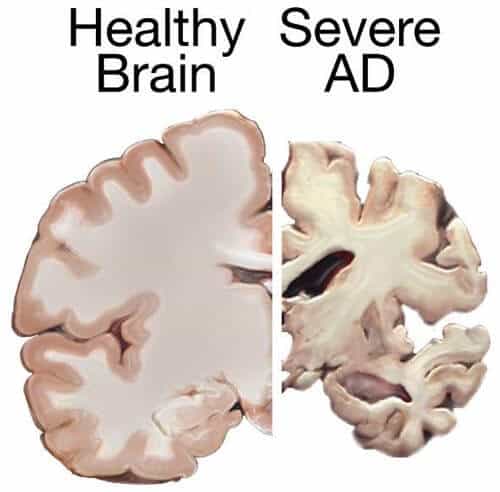Alzheimer’s disease affects more than 26 million people worldwide.
It is predicted to skyrocket as boomers age—nearly 106 million people are projected to have the disease by 2050. Fortunately, scientists are making progress towards therapies. A collaboration among several research entities, including the Salk Institute and the Sanford-Burnham Medical Research Institute, has defined a key mechanism behind the disease’s progress, giving hope that a newly modified Alzheimer’s drug will be effective.
In a previous study in 2009, Stephen F. Heinemann, a professor in Salk’s Molecular Neurobiology Laboratory, found that a nicotinic receptor called Alpha7 may help trigger Alzheimer’s disease. “Previous studies exposed a possible interaction between Alpha-7 nicotinic receptors (α7Rs) with amyloid beta, the toxic protein found in the disease’s hallmark plaques,” says Gustavo Dziewczapolski, a staff researcher in Heinemann’s lab. “We showed for the first time, in vivo, that the binding of this two proteins, α7Rs and amyloid beta, provoke detrimental effects in mice similar to the symptoms observed in Alzheimer’s disease .”
Their experiments, published in The Journal of Neuroscience, with Dziewczapolski as first author, consisted in testing Alzheimer’s disease-induced mice with and without the gene for α7Rs. They found that while both types of mice developed plaques, only the ones with α7Rs showed the impairments associated with Alzheimer’s.
But that still left a key question: Why was the pairing deleterious?
In a recent paper in the Proceedings of the National Academy of Sciences, Heinemann and Dziewczapolski here at Salk with Juan Piña-Crespo, Sara Sanz-Blasco, Stuart A. Lipton of the Sanford-Burnham Medical Research Institute and their collaborators announced they had found the answer in unexpected interactions among neurons and other brain cells.
Neurons communicate by sending electrical and chemical signals to each other across gaps called synapses. The biochemical mix at synapses resembles a major airport on a holiday weekend—it’s crowded, complicated and exquisitely sensitive to increases and decreases in traffic. One of these signaling chemicals is glutamate, an excitatory neurotransmitter, which is essential for learning and storing memories. In the right balance, glutamate is part of the normal functioning of neuronal synapses. But neurons are not the only cells in the brain capable of releasing glutamate. Astrocytes, once thought to be merely cellular glue between neurons, also release this neurotransmitter.
In this new understanding of Alzheimer’s disease, there is a cellular signaling cascade, in which amyloid beta stimulates the alpha 7 nicotine receptors, which trigger astrocytes to release additional glutamate into the synapse, overwhelming it with excitatory (“go”) signals.
This release in turn activates another set of receptors outside of the synapse, called extrasynaptic-N-methyl-D-aspartate receptors (eNMDARs) that depress synaptic activity. Unfortunately, the eNMDARs seem to overly depress synaptic function, leading to the memory loss and confusion associated with Alzheimer’s.
Now that the team has finally determined the steps in this destructive pathway, the good news is that a drug developed by the Lipton’s Laboratory called NitroMemantine, a modification of the earlier Alzheimer’s medication, Memantine, may block the entry of eNMDARs into the cascade.
“Thanks to the joint effort of our colleagues and collaborators, we seem to finally have a clear mechanistic link between a key target of the amyloid beta in the brain, the Alpha7 nicotinic receptors, triggering downstream harmful effects associated with the initiation and progression of Alzheimer’s disease,” says Dziewczapolski. “This is a clear demonstration of the value of basic biomedical research. Drug development cannot proceed without knowing the details of interactions at the molecular and cellular level. Our research revealed two potential targets, α7Rs and eNMDARs, for future disease-modifying therapeutics, which Dr. Heinemann and I both hope will translate in a better treatment for Alzheimer’s patients.”


